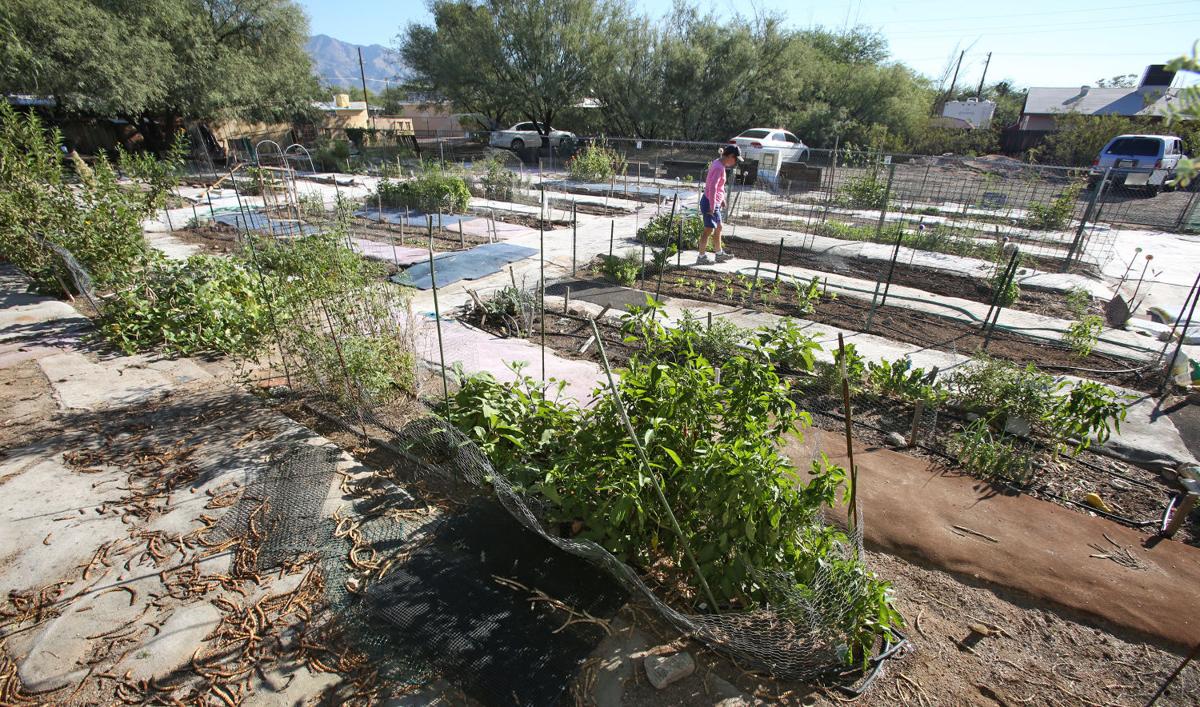If you live in an apartment, condo, or don’t have a yard, you may think you don’t have room to garden. With some ingenuity, however, there are some ways to do it. Here are some tips.
- First, evaluate your deck, balcony or window space for sunlight exposure. If you don’t have any south or west-facing windows it may be tricky to grow many plants. If your balcony faces north, for example, and does not get sun, you will only be able to grow shade-loving plants there. You won’t be able to grow things like dwarf citrus, tomatoes, and most native plants in the shade. If you’re really gung-ho, however, you can purchase grow lights to provide your plants with the energy they need to photosynthesize.
- Check out your rooftop space. Although in Tucson our roofs tend to get extremely hot (over 120 F on cooler summer days), your house or building may have some shaded or sheltered space that you may be able to use if you’re short on space on the ground. You can install some small wireless thermometers to check on the temperatures on your roof before you make any decisions; you can also choose to plant there only in the winter. If you do decide to put containers on your roof, make sure it can support the extra weight — consult a structural engineer. If you rent, you will of course need to get permission from your landlord.
- If you’re growing food, grow only what you know you will eat. If you don’t eat spinach, don’t waste valuable container space on it just because it’s easy to grow. Use your limited space for food that you eat regularly —tomatoes, for example, or lettuce.
- Use all three dimensions to garden. Particularly if you have any outdoor balcony space, plant some vines along with regular plants in your containers. This will give you some vertical plantings. Even indoors, you can hang pots from the ceiling to increase your garden space. You can grow tomatoes upside down from hanging pots. Beans are great climbers and can be included in pots with other veggies. You can also attach containers to vertical surfaces. Here are some examples of DIY vertical gardens; many of these can be adapted to indoor locations.
- Even in fairly dark living spaces, many people have at least one area with some sun. You can plant in small containers and grow cooking herbs or flowers on your windowsills.
- Keep in mind that your containers will dry out faster and be more susceptible to extreme temperatures. Plants will also use up the resources in the potted soil quickly. Make sure you check the soil moisture and fertilize the pots regularly.
- Check out hydroponic systems. The Pima County Master Gardeners have free online lectures periodically on how to set up a hydroponic system. You can also check out this article on hydroponic gardening for beginners. EcoGro, Green Lady Hydroponics and Growers House are good local resources for hydroponic equipment and information.
- For some things, like extensive fruit and veggie gardening, you will need to think outside the box — or outside your yard. You can rent space in urban gardens from Community Gardens of Tucson. You can also see what your neighbors might be growing and get together with neighbors to trade herbs, fruits, and veggies.
- If you have pets, you will want to make sure that whatever plants you’re growing aren’t harmful to them. Many common houseplants are toxic or even lethal to animals. This list from the American Society for the Prevention of Cruelty to Animals will help you choose the safest ones.
If you’re gardening in a small space, send us a photo and let us know how you’re doing it! We will publish it in a future issue of the newsletter.
Links to inspiration and resources
- Container food plants
- Six tips for pollinator gardens in small spaces
- Cactus and succulents inside your home
- The Urban Farm. Based in Phoenix, this site offers instructional videos, blog, podcast, classes, and lots of other resources. Their goal is to help people grow their own food even in cities.
- Epic Gardening. Founder Kevin Espiritu is based in San Diego, and taught himself urban gardening over the past 8 years. He has a podcast, a YouTube channel, a website, and a newsletter you can sign up for.
- Indoor Gardening 101
- Tips and inspiration for creating a vertical indoor garden from Apartment Therapy
- Container gardening in the Southwest desert





